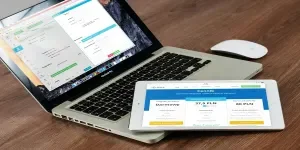So you want to start a business but have no idea what to do, no experience, no connections, and no money? It sounds impossible, but it’s not. Some of the most successful businesses today started with an idea scribbled on a napkin, and many of their founders didn’t have a business background.
The key is not knowing everything upfront but knowing how to take action, even when you don’t have all the answers. This guide will walk you through starting a business from scratch, even if you do not know where to begin.
First, understand that building your own business takes time, effort, and patience. There’s no magic formula or overnight success. But if you’re willing to work, you can create something profitable, sustainable, and maybe even life-changing. Let’s dive in.
Table of Contents
How to start a business with no idea in 9 steps
Step 1: Find an idea (even if you think you don’t have one)
Step 2: Read books that will change how you think about business
Step 3: Ignore the self-doubt (it’s lying to you anyway)
Step 4: Refine your business idea (and make it real)
Step 5: Find your first potential customers
Step 6: Have conversations with real people (not just surveys)
Step 7: Build the smallest, best version of your business
Step 8: Don’t grow too fast, too soon
Step 9: Care about your business (and your customers)
Final thoughts
How to start a business with no idea in 9 steps
Step 1: Find an idea (even if you think you don’t have one)

People often say, “I have no business ideas.” Here’s the truth: You do. You just haven’t unlocked them yet. A great business idea usually comes from a sweet spot between three things:
- Something you enjoy doing
- Something you have (or can develop) skills in
- Something people are willing to pay for
To find your sweet spot, use this simple exercise:
Grab a piece of paper (yes, actually write this down—not on a Google Doc or spreadsheet). Set a 15-minute timer and create a three-column list:
- 10 things you enjoy doing that involve work. (Examples: writing, cooking, organizing, coding, and DIY projects).
- 10 ways you could share your skills with the world. (Examples: selling products online, teaching courses, freelancing, and offering a service).
- 10 business ideas based on your first two lists.
The goal isn’t to come up with one perfect business idea immediately. It’s to start thinking like an entrepreneur. If nothing clicks at first, don’t stress. Business ideas are like puzzle pieces that connect when you least expect it.
Step 2: Read books that will change how you think about business
You don’t need a business degree to succeed. But you do need to start thinking differently. Here are three must-read books that will help you shift from “I have no idea” to “I can do this”:
- The Lean Startup by Eric Ries teaches you how to test ideas quickly and avoid wasting time.
- Body of Work by Pam Slim: This book will help you connect your skills and experiences to a profitable business.
- Any book by Seth Godin: Seriously, just pick one. His insights on marketing and business mindset are game-changing.
Here’s a little warning: Don’t get stuck only reading. Books are meant to guide action, not delay it. Give yourself a two-week deadline to read and move forward.
Step 3: Ignore the self-doubt (it’s lying to you anyway)

Here’s something no one tells you when you’re starting: Self-doubt is normal. That little voice in your head asking:
❌ “What if no one buys?”
❌ “What if this is a dumb idea?”
❌ “What if I fail?”
Every successful entrepreneur has had these exact thoughts. The difference is they didn’t let doubt stop them. The best way to beat self-doubt is to take action before you feel ready. Once you put something out into the world—whether it’s a blog post, a product, or a small service—you’ll realize:
- Most people aren’t judging you as much as you think.
- You don’t need to be perfect to get started.
- The more you try, the easier it gets.
Step 4: Refine your business idea (and make it real)
If you haven’t found the right idea, go back to step one. But if you have a rough idea, it’s time to make it real. The best way is to find out if people want it. Ask yourself the following questions:
- Who would benefit from this idea?
- Would people pay money for this?
- Can I start small without a big investment?
If you’re unsure, ask people directly (which leads us to the next step).
Step 5: Find your first potential customers

Customers are not followers, fans, or friends. They are people who will pay you for your product or service. Here’s how to find them fast:
- Reach out to friends & family—not to sell, but to ask if they know someone who might need what you offer.
- Search online communities and social media platforms like Facebook Groups, Reddit, LinkedIn, and niche forums. These have thousands of potential customers.
- Look at competitors. If similar businesses exist, that’s good! It means there’s demand. So, study what they’re doing right.
Step 6: Have conversations with real people (not just surveys)
Many people skip this step because they’re afraid to talk to strangers. Don’t be that person. If you’re serious about starting a business, you need real feedback from real people. So, consider doing the following:
- Set up calls or in-person meetings with potential customers.
- Ask them what their biggest struggles are related to your idea.
- Don’t start pitching immediately. Instead, listen to what they have to say.
Suppose multiple people have the same pain point. Congratulations. You just found a business opportunity.
Step 7: Build the smallest, best version of your business

Forget big launches and expensive websites. Your first business model should be simple, functional, and testable. If it’s a product, sell a basic version before perfecting it. Offer a few free or low-cost trials to get testimonials if it’s a service. Lastly, post videos, blogs, or podcasts to see what gets traction if it’s content-based. The point is to start small, test, improve, and repeat.
Step 8: Don’t grow too fast, too soon
A common mistake new entrepreneurs make is scaling before their business is ready. Instead, focus on quality before quantity. Get your first few customers, improve your offering, and let word-of-mouth marketing build momentum. The most successful businesses don’t grow overnight—they grow intentionally.
Step 9: Care about your business (and your customers)

People will notice if you don’t care about what you’re doing. You don’t have to change the world with your business, but you should genuinely want to help people or solve a problem. If you care about the business, doing the following is a good idea:
- Listen to feedback.
- Improve based on real customer needs.
- Be consistent—most businesses fail simply because people quit too soon.
Final thoughts
Starting a business when you have no idea what to do might feel overwhelming. But here’s the truth: You don’t need a perfect idea, you don’t need tons of money, you just need to start. The first step is always the hardest—but once you take it, you’ll realize you’re already ahead of 99% of people who never try. Remember that starting a business has never been this easy—the trick is to take the first step.



